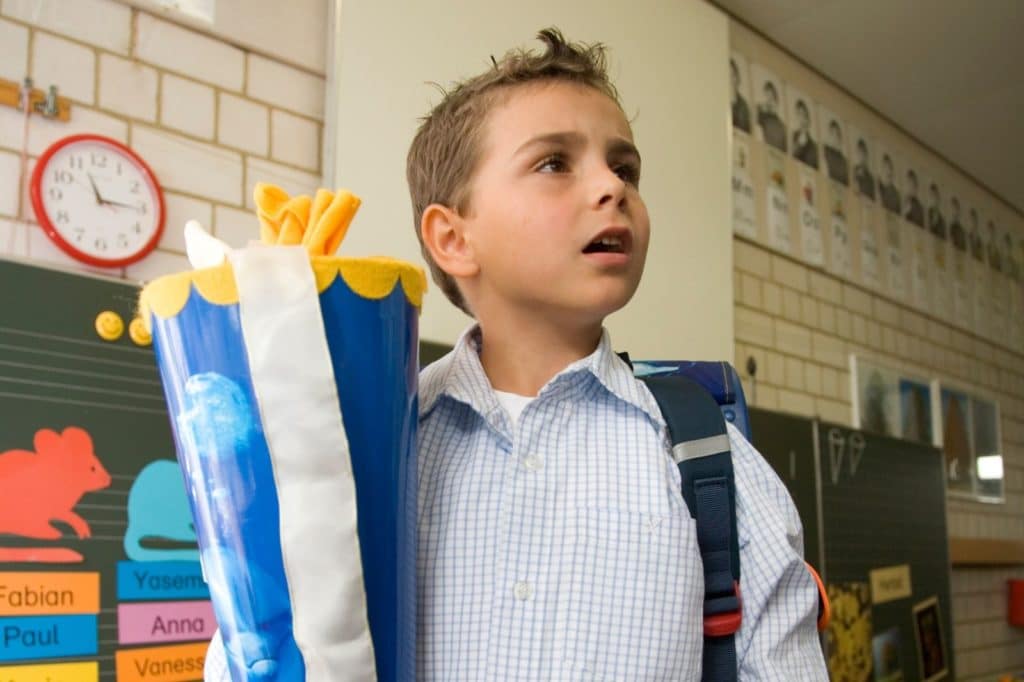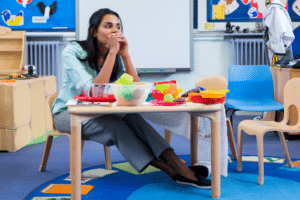When a student leaves to attend an inpatient mental health care program, you’re likely to have some questions and concerns about how to best help when that student returns. The whole experience can be overwhelming for everyone involved — whether you’re an educator, faith worker, or other youth professional. Often there are questions from adults and the child’s peers about where the child has been, and what will happen once the child returns. There may also be questions about the child’s behavior before he or she was admitted to the treatment. As an educator, there are several things you can do to make the child’s transition back a smooth one.
What Inpatient Treatment Is … and What It Isn’t
If you will be facilitating some of the discussions and explanations around the child’s return, it’s important that you have an accurate understanding of mental health inpatient treatment. Typically, a child is hospitalized because the symptoms of their illness are so intense that it puts them or others at risk of harm. The treatment takes place at a hospital or another specialized facility to provide intensive, around-the-clock treatment for mental illness. During an inpatient stay, which can last from just 24 hours to several days or weeks, the child’s mental illness is assessed and monitored closely. Inpatient participants may be prescribed medication and often participate in individual, family, and group therapy during their stay.
Sadly, inpatient treatment is sometimes stereotyped as something from One Flew Over the Cuckoo’s Nest, with mean doctors and nurses and cruel treatments. The reality is that it’s actually a positive and transformative experience for many. Many of my clients have told me how helpful their inpatient treatment was because of the kind and helpful staff and the therapeutic strategies they learned during their time there. Part of your work may be de-stigmatizing the child’s participation in an inpatient program and correcting any misconceptions those around you may have.
Make a Transition Plan
When a patient is discharged, he or she is often given treatment recommendations to help maintain the gains made during inpatient treatment. These recommendations are typically strategies that the child learned during their inpatient stay and that can be used in everyday life, such as stress-management techniques like deep-breathing, emotional awareness, and medication compliance.
If the child is school-aged, this treatment plan may include school-related recommendations including classroom-related accommodations, meetings with the school counselor, or regular parent check-ins. When appropriate, it can be helpful to reach out to the parents to see if there are any treatment recommendations you can assist with. This shows the parents that you are open to taking on a supportive and collaborative role, and also helps open the lines of communication for an ongoing conversation about the child’s progress and adjustment to being back in school (or other programs). This way, the parents know that they can reach out to you with any updates or needs in the future. Plus, through your support, you play a powerful role in helping the child know that they are supported and accepted when they return.
Encourage Sensitivity
As an educator and/or youth worker, you have a unique platform to shape how the child’s fellow students and other staff understand the child’s return to school. Collaborating with the school counselor and the child’s parents will likely be helpful. The parents can clarify what details they are comfortable sharing and what they would like kept private. Above all, it is important to be sensitive to the child’s emotional state and his or her privacy. They may be scared to return to school because they are wondering if they will be teased by their peers. So once you have clarified what information the parents give permission to communicate, discuss with the principal and other faculty members about the best way to inform the child’s peers of their return. Sometimes, no explanation is needed; other times, a sensitive explanation might be beneficial. I remember, as a child, attending an assembly where our principal told us that one of our classmates was returning from a car accident and had some injuries that made them look different. I remember that experience being so helpful because it answered questions my classmates and I had and prepared us to be welcoming upon our classmate’s return.
You will also want to keep an eye out for any teasing that may happen. As mentioned previously, there may be misunderstandings among students and faculty alike, surrounding inpatient treatment. Students may call the child “crazy” or start rumors that wildly exaggerate what the child experienced while in treatment. Similarly, other staff members may use stigmatizing language when discussing the child’s experience and return to school. If you do witness any teasing or inappropriate talk, take advantage of the opportunity to provide gentle correction on any misconceptions the aggressor may have, and demonstrate your own acceptance of the child. Through gentle corrections and education for both students and staff, you will play a powerful role in de-stigmatizing mental illness and treatment.
While it is true that a child returning from inpatient treatment may have some fears about what it will be like to go back to school and whether or not their peers will be accepting, it can be a smooth transition back into the regular routine. And because children spend so much of their day at school, educators and other youth workers can help make that smooth transition a reality.
In the family and friends handbook, How can I help?, you can get a better understanding of what families go through when a child has a mental health crisis. Through collaboration with the child’s parents, de-stigmatizing mental health treatment, and assisting with any post-treatment plan, you will make a world of difference for a child who has bravely undergone treatment and wants to fit in again.










